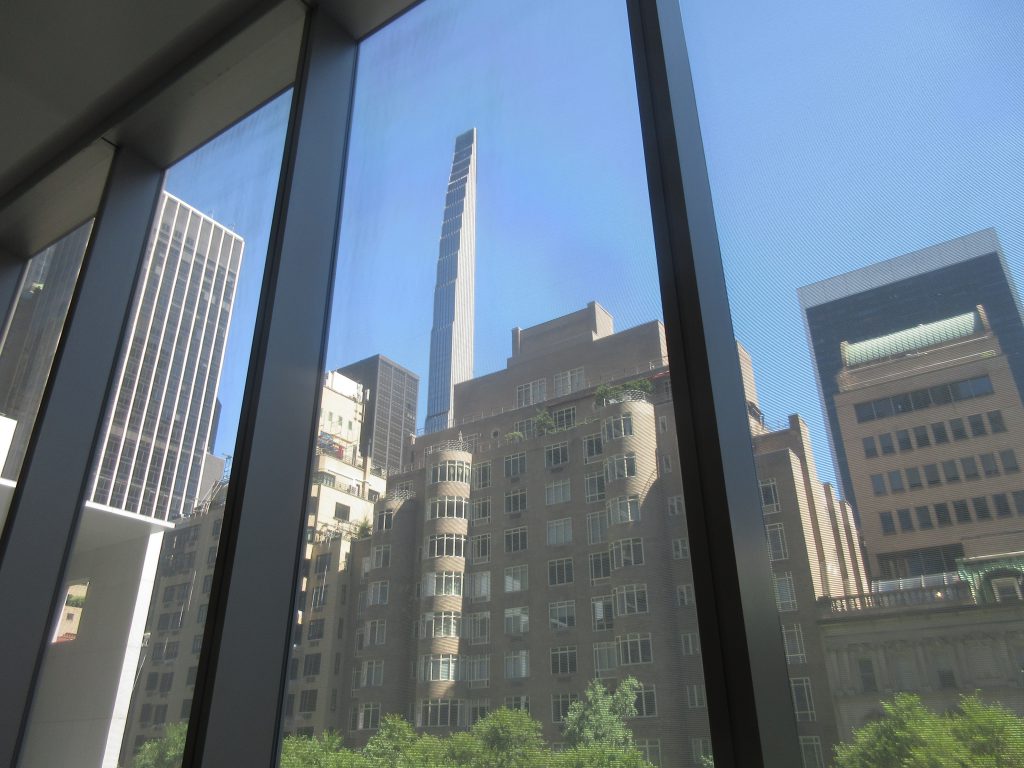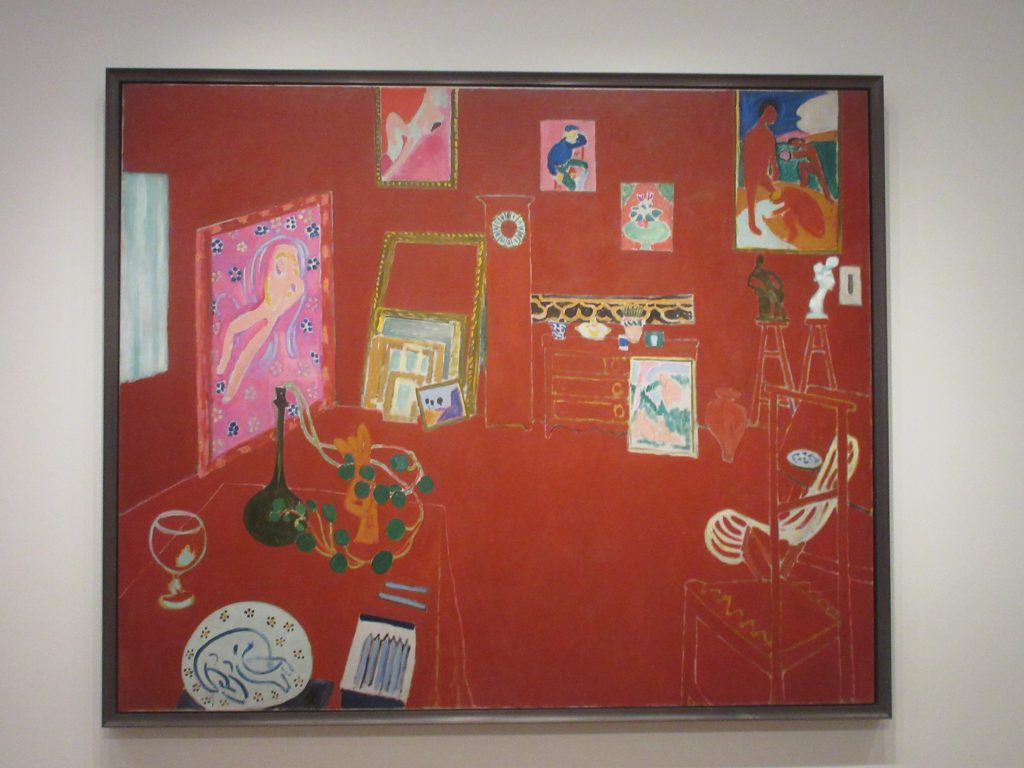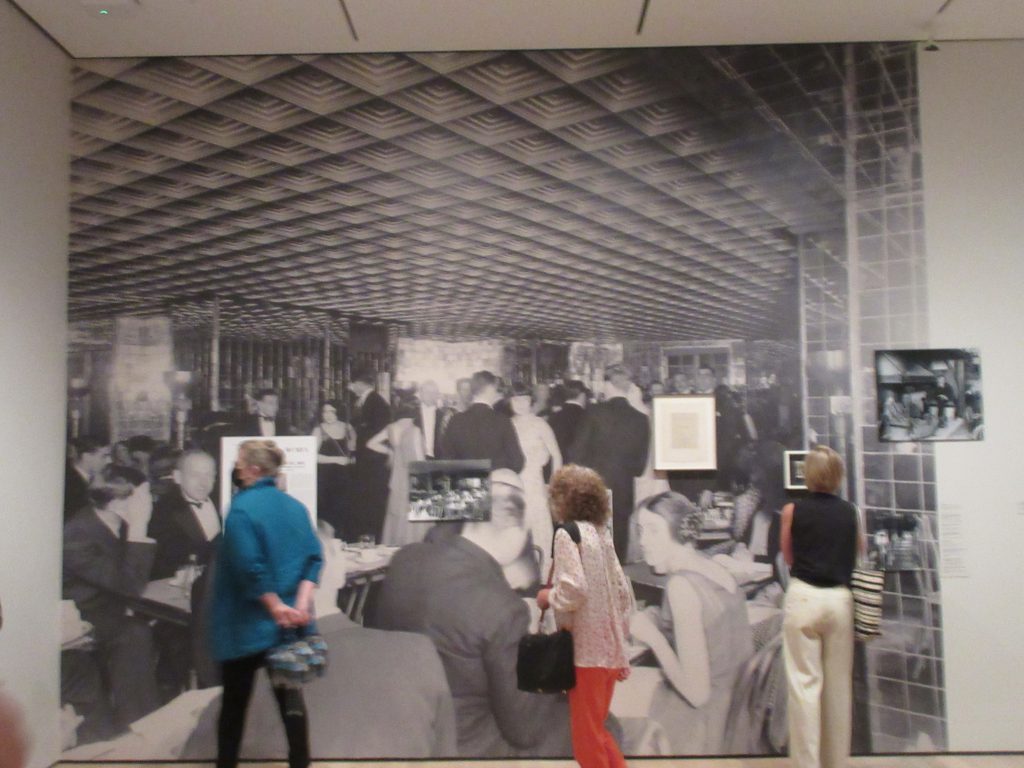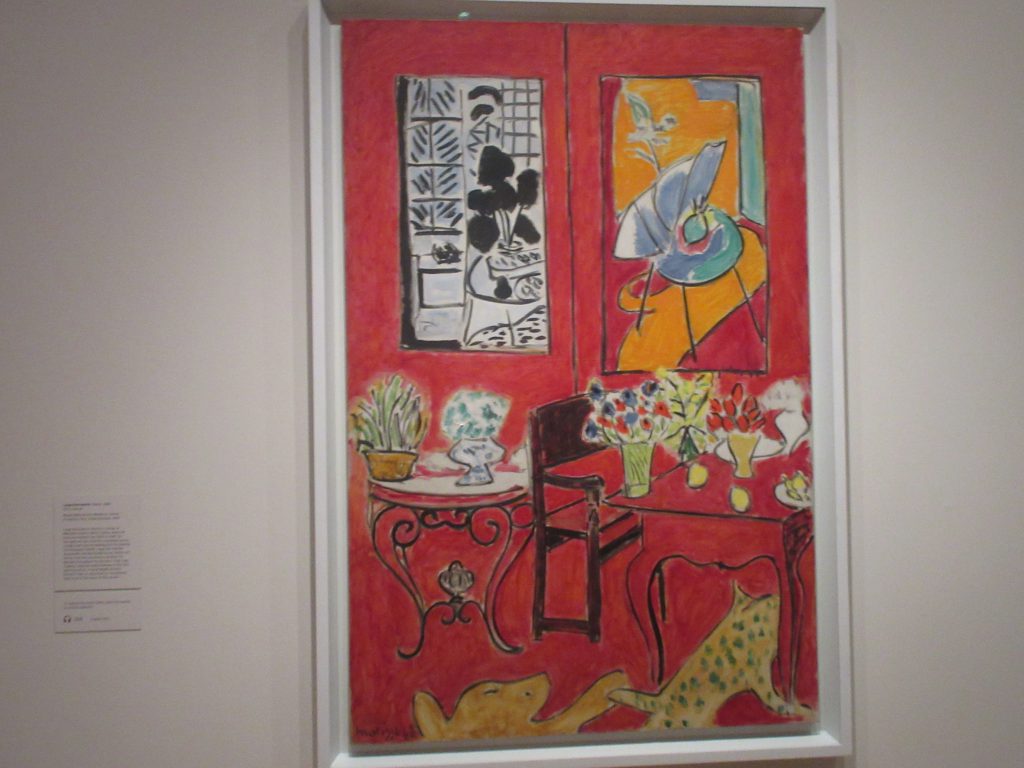Hits: 1886

WPCNR DAYLIGHT RAMBLER. Aesthetics & Comment by John F. Bailey. July 5, 2022:
I went back to the Museum of Modern Art in gloriously alive New York City, USA yesterday with Brenda Starr my cultural attache’ to see the Henri Matisse exhibition.
It was a glorious day in the Greatest City in the World as WABC’S Ron Lundy used to call it (when WABC 77 was MusicRadio and made you happy).
Parking on 51st Street we walked crosstown in the “lived in” chaos- glory rolling in front of us and soaring around us of New York City where the vain the profane and the gets-into-you humanity in all its one-and-many-and-all kinds amazes the senses. New York makes you alive and makes your heart beat.
Entering MOMA now overlooked by a “supertall” ascending into the sky overlooking a art deco residence with circular terraces which is amazing to see, we entered the echoing big white entrance and ascended to the third floor where the Matisse exhibition is. It is there until September.
Henri Matisse is the Post-Impressionist pioneer of 1911 in which from his Red Studio in Montparnesse he created in-your-face jagged color shapes projecting jarring assaulting the observer with images that jump out at you, new art for his time, yet still as new as it was when he painted them.
The original paintings you see here in the painting below took art from the realism and dreamlike beauty of the Impressionists to visuals that that assault and draw you in to the humanity of the individual, the vibrance of the real persons he painted in “The Red Studio.”

His most famous painting is on display in an interactive gallery. Mr. Matisse felt it was his best work, but his Russian patron, Sergei Shchukin, whom he presented it to, did not like it. You can read the correspondence with the patron in the MOMA exhibit. Reading between the lines, Matisse who felt it was his best work, eventually sold the painting to the Gargoyale Club in London, where it hung in the bar.

The Gargoyle Club was the “City Limits” of London, the “21 Club” of the upper class London crowd at the time. Eventually the owner of the Gargoyle Club wanted to sell the painting back to Mr. Matisse, but the painting, a heartbreak for Matisse, he did not want back. The work when displayed in New York with other of his paintings became the sensation of the art world in New York. Even then, if could make it in New York you could make it anywhere.
When I saw “The Red Studio” painting yesterday it drew me into itself and radiated the creative life, the atmosphere which so inspired Mr. Matisse.
Every work of art does that to you if you let it , and “The Red Studio” lights up this tastefully displayed exhibition of Mr. Matisse’s works in a distanced way from the “Red Studio” where Mr. Matisse created them so they like so many different children of the artist’s brush strokes stood apart on their own.
I do not know if this was the studio’s intent, but the curator/designers of this exhibit have not crowded the works but set them apart but together reminiscent of a “cocktail party of paintings” holding court and working the effervescent essence of these forerunners of realism.
“The Red Studio” will work on you the viewer with a magic “reach out” visual, emotion rush of what a creative space does for the artist. The painting includes pictures in it of works Matisse painted in the studio of red walls. It is an amazing creative concept.
What MOMA has done is they have analyzed the painting and discovered an amazing thing about how the painting was created. Through the magic of electronic devices that can “see” into a painting MOMA’s curators and analysts and painting reseachers explain in a video how “The Red Studio” was created.
Analysis done when the painting was reframed showed it originally had not been red. It had been green, yellow and sundry shades, essentially a painting of the room Matisse worked. The video showing the analysts telling what their analytical technology revealed to them was that Matisse considered his finished work, then in a sense the painting inspired him to make a drastic change.
The analysts said Matisse painted around the original paintings and objects in the painting with red.
They said the brush strokes applying the red were firm, broad, splashed and what can be described as quick saturating strokes.
What I drew from this is the power of the creativity within Mr. Matisse took over, gave him the idea to add the power “red” to the painting which actually was the color of his real studio.
That revelation revealed by not an autopsy but an examination of the “living painting” that delivered the spirit of the artist, the audacity, adding a major change to the painting not knowing whether or not it would be great or would ruin his work.
That filled me with wonder.
“The Red Studio” exhibition of this audacity of the artist, (and every artist has this), delivered to me the value of art we sometimes forget.
The last painting Matisse ever did was another portrait of his studio. This is it below. I felt this showed how much Mr. Matisse realized what the original “Red Studio” meant to him.

Art is there to remind us of the unlimited capacity for creativity, and higher judgment we possess whether we paint, write build.
“The Red Studio” became famous in New York.
New York critics were just awed by it.
And modern art was born about a century ago.
I love old pictures of ruins of the past. I mourn the destruction civilizations of the past wrecked on cities of the past they had conquered, only to be discovered by future generations.
We learn from the past.
We learn from the artists of the past, people like us who tried and those who dared like Henri Matisse, as doubtful as any of us, came up with at once a painting that embodies the essence of creativity of listening to what your talent tells you to do and having confidence in it.
We learn from the past.
F. Scott Fiztgerald’s character, Nick Carraway was right at the end of The Great Gatsby, when he wrote, “So we beat on, boats against the current, borne back ceaselessly into the past.”
Henri Matisse will be at MOMA through the summer.
He is a must see.
His story, his art, so embodies the spirit of hope and faith in ourselves that sustains us.
